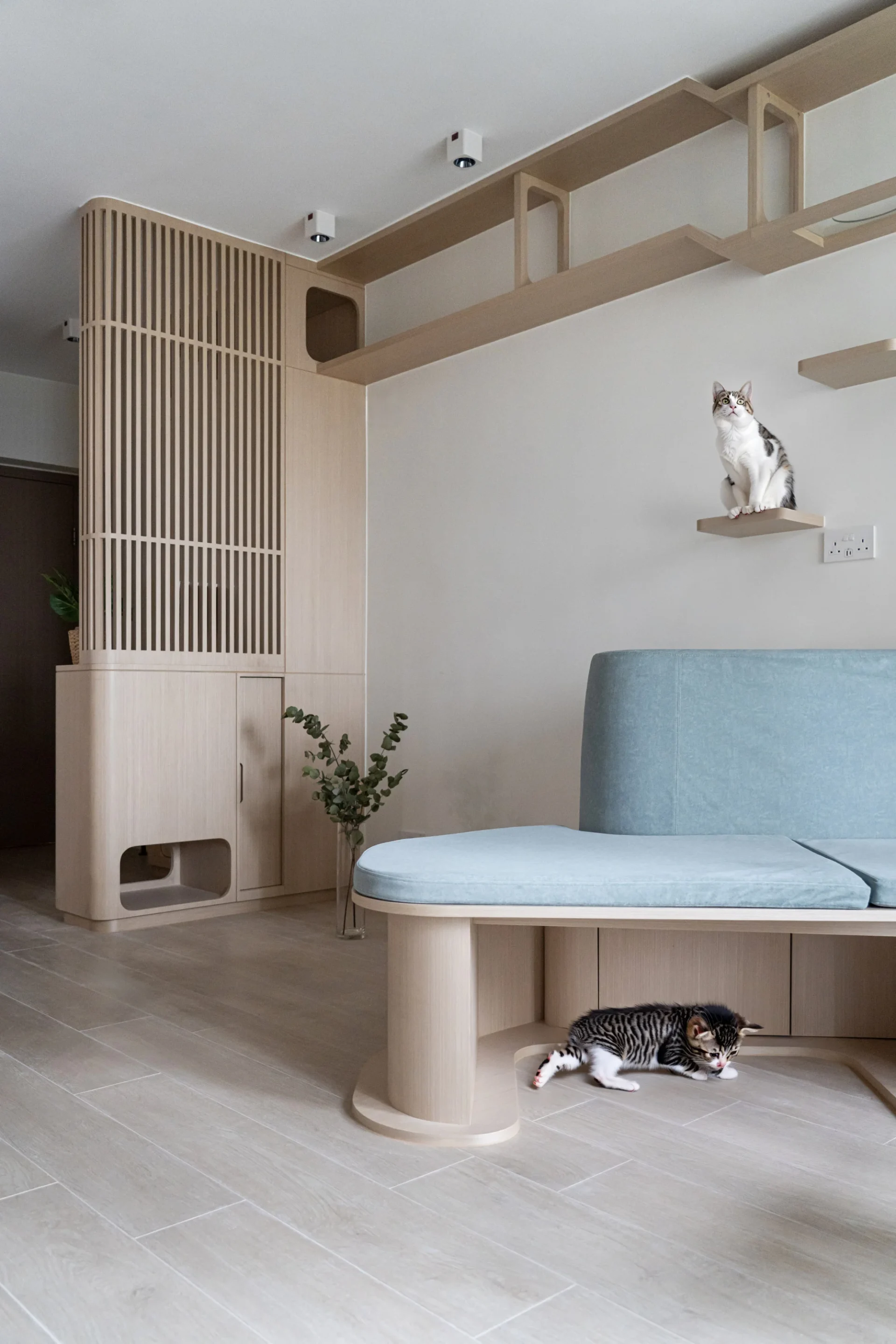Hong Kong apartments are notoriously compact, making it a challenge to accommodate all of life’s necessities without creating chaos. Yet, with innovative tweaks, it’s possible to live large in a tiny home. Underfloor storage is a smart solution, allowing for customized compartments beneath a platform to store items without cluttering the living space.
Norman Ung, co-founder of Design Eight Five Two (DEFT), applied this idea to his 266 sq ft micro flat in Tai Wai. He created a transformable platform with a mattress on one side and a wall unit with a reading nook on the other. A hydraulic table in the middle can rise from the floor, eliminating the need for a permanent dining or work area. This platform aligns with the existing bay window, maintaining a streamlined look and adding a designer touch with its ash wood finish.
Ung also utilized space next to the front door for storing larger items, turning a previously wasted area into practical storage. Additionally, a series of deep, pull-out drawers behind a partition holding a TV keeps the flat clutter-free. DEFT has implemented such space-optimizing concepts in various projects, including residential units, serviced apartments, and student accommodations.
For those with enough headroom, creating a mezzanine can double the usable space. Patrick Lam of Sim-Plex Design Studio used this technique in a 400 sq ft Kowloon apartment, installing an elevated platform with a bed and desk. This setup, accessible via a remote-controlled folding staircase, provides both entertainment space and a dedicated area for yoga, making the most of the flat’s 3.4-metre-high ceiling.
Even larger apartments can benefit from space-enhancing designs. JAAK Design transformed an 850 sq ft duplex in Kennedy Town by softening the appearance of structural elements. They used a decorative wooden screen to shield the staircase, inspired by traditional Japanese shoji screens, to create a feature wall that also serves a practical purpose.
Otto Ng, design director at LAAB, draws inspiration from Japanese space-saving techniques, adapting them to Hong Kong’s climate. In a 667 sq ft Kowloon apartment, Ng prioritized simplicity and mindfulness, eliminating clutter with bespoke elements like a sliding oak and brass desk and a custom-designed tapparelle screen incorporating a TV on both sides.
Tailoring storage cabinets to specific household needs is another effective strategy. For pet owners, careful planning ensures harmony. Karr Yip of ADO has designed sofas with scratch-resistant fabrics and cut-outs for cats, as well as shelves that double as jumping platforms. Alvin Cheng of MAD Studio created a dedicated space for a dog in the living room cabinetry of a 650 sq ft flat, integrating the pet’s needs seamlessly into the overall design.
These innovative solutions demonstrate that, with thoughtful design, even the smallest Hong Kong apartments can be transformed into functional and harmonious living spaces.
READ MORE:
